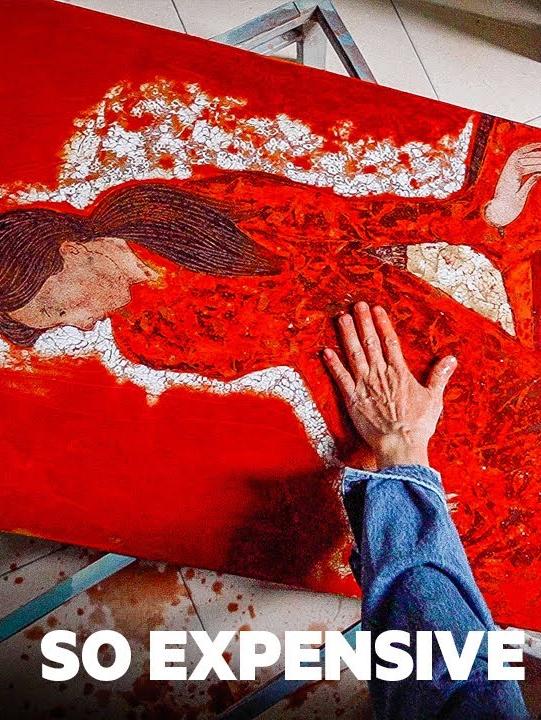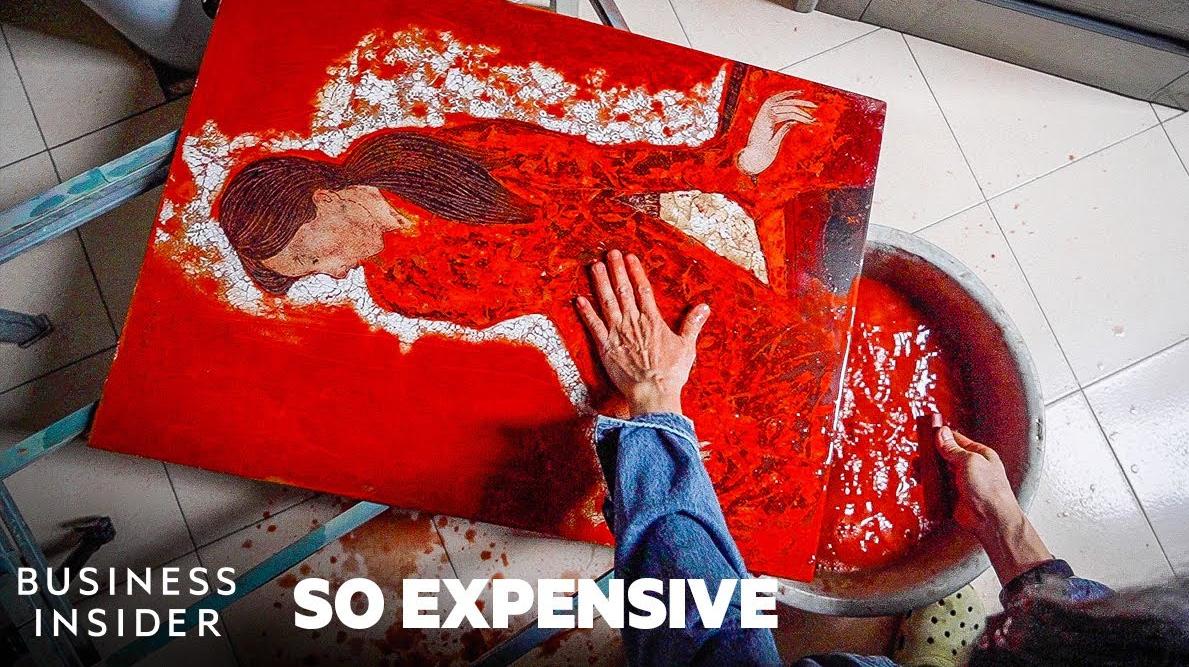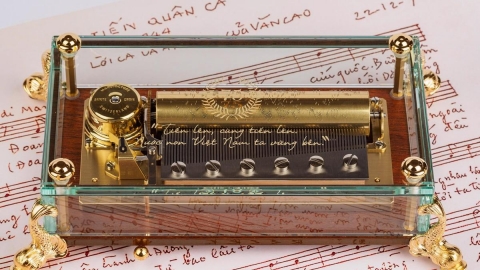Last year, a lacquer painting sold for $972,000. What makes this type of painting special? Why is it so expensive?
That was the opening question of Business Insider - a famous online newspaper about finance and business in the US.
To answer this question, they sought out Mr. Pham Chinh Trung, a lacquer artist with nearly 50 years of experience in Vietnam. He is someone who understands the risky and laborious process of completing a lacquer painting. Business Insider's report provided detailed information and a realistic perspective on the process of creating a lacquer painting as well as explaining why this type of painting is so valuable.
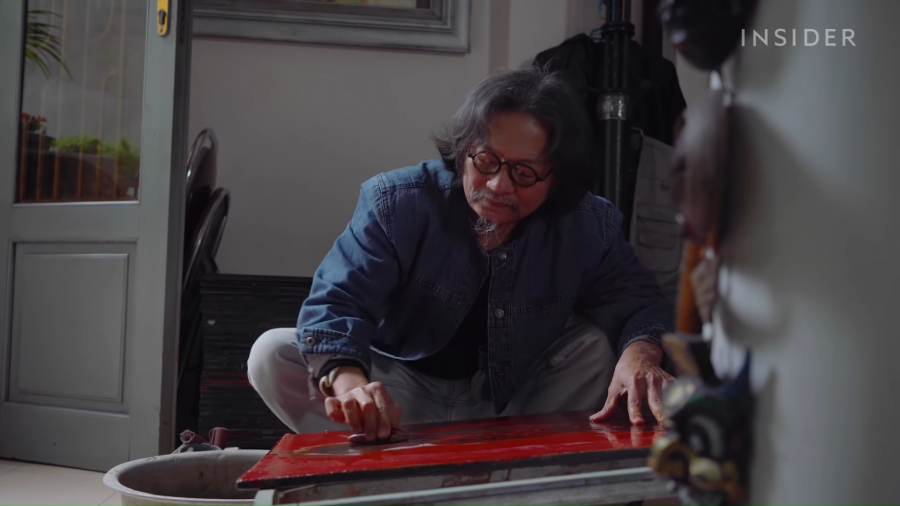
Pham Chinh Trung - lacquer painting artist with nearly 50 years of experience
From expensive ingredients
Skill, time and materials are the three important factors for a perfect painting. The materials for lacquer paintings must be taken from nature. The main paint for the paintings is the resin of the lacquer tree (also known as "rhus succedanea"), this tree first appeared in Southeast Asia. To get about 1.5 kg of resin, they have to cut about 400 trees.
"Lacquer trees are planted for three years and can be harvested after four to five years. To harvest the sap, we have to start at 4 a.m. After cutting, we use pearl shells to collect the sap. After about three to four hours, the sap will be harvested," a lacquer tree grower shared with Business Insider.
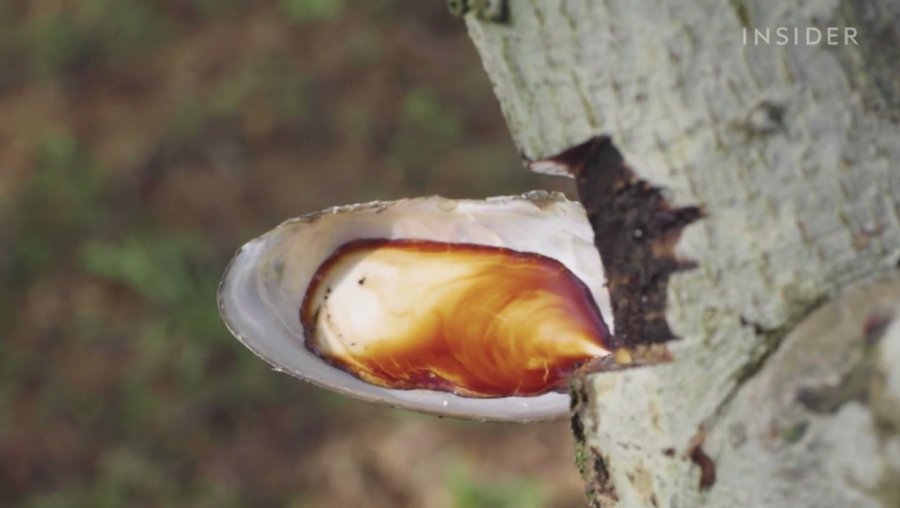
Lacquer resin is harvested to make raw materials for lacquer paintings.
The harvested resin still contains impurities and needs to be cleaned. The artist then mixes it for several hours before starting the lacquer work. The lacquer palette is also made from natural ingredients according to the mixing formula. For example, white comes from eggshells, red from cinnabar - a rather toxic ore.
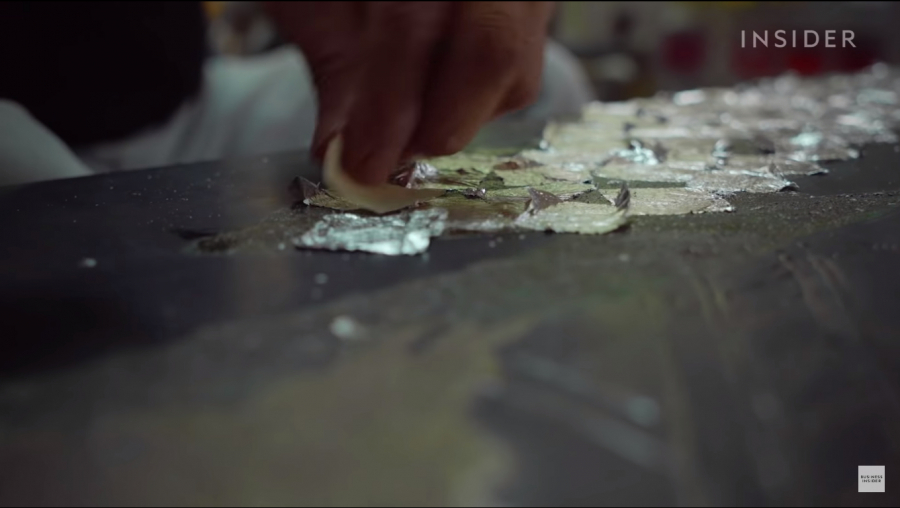
Silver leaf - One of the most expensive materials of lacquer paintings
During the painting process, the artist also uses silver or gold leaf to create a soft light. These are the most expensive but indispensable materials of lacquer paintings. The expensiveness of the materials and the sophistication in the process of creating the paint are part of the reasons why the price of this type of painting is so high.
a feat of engineering and full of luck
In terms of painting techniques, lacquer paintings are the opposite of oil paintings. If oil painters paint from back to front, that is, the whole scene first and the details later, lacquer paintings are completely the opposite.
According to Mr. Trung, lacquer paintings are painted in detail first and then the whole picture later, so when they are finished, the artist cannot see what is underneath. They have to gradually polish the details and colors to make them stand out. This is the reason why lacquer painting is also accompanied by suspense. The artist cannot see the image but always wonders if the material they used is standard or if the color is accurate.
"Skilled people must create a correlation between those elements, otherwise the work will become almost like an oil painting," he emphasized.
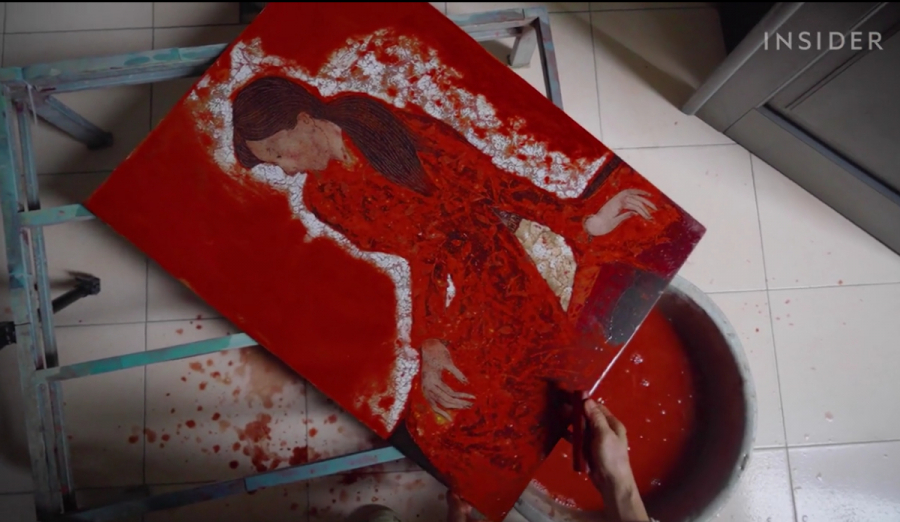
The value of a painting also comes from the skill and patience of the painter.
The value of the painting also comes from the skill and patience of the painter. Each work is unique and unpredictable. The painter has no idea how the work will turn out after the sanding process. It may turn out to be a valuable work, or the painter may have to scrap it and start over.
According to Mr. Trung, even artists with solid knowledge and skills can only master 80% of their ideas, the remaining 20% depends entirely on luck. "Sometimes that random 20% brings better results than expected, but sometimes just a small part does not meet the requirements, so the artist is forced to redraw" - Mr. Trung shared.
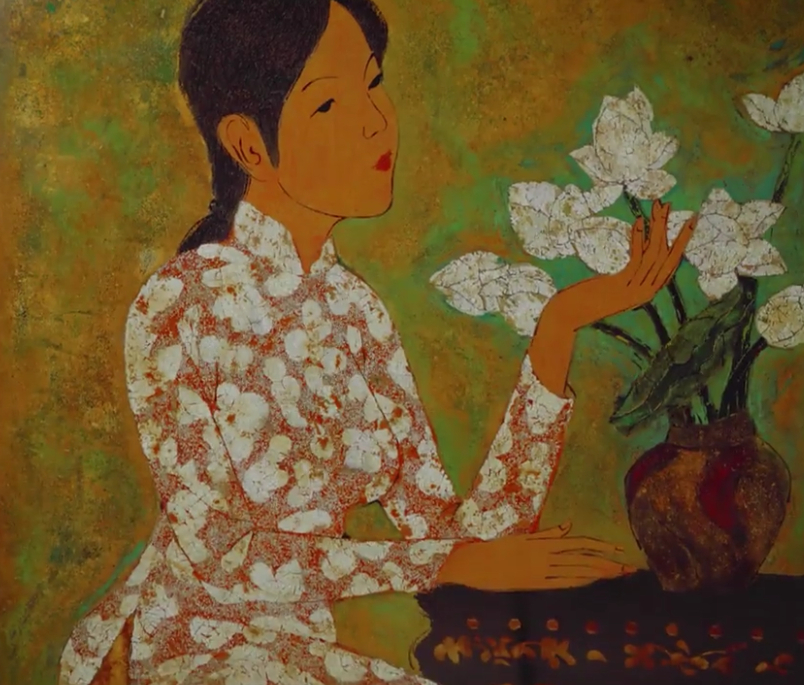
It can take up to a month to complete a lacquer painting.
After finishing painting, the artist must let the paint dry, so humidity is a particularly important factor.
"Ideally, the humidity in the house is around 70-80%. On dry days, the paint cannot dry. The moisture in the air helps the paint components bond together, creating a drying reaction. If favorable, the painting can dry in 1-2 days. In dry weather conditions, this process will take more than three days. Therefore, to complete a lacquer painting, the artist can take a whole month," he shared.
The final stage for lacquer painting is polishing with charcoal powder. After completing this stage, the surface of the painting will appear smooth and shiny. It is also because of the elaborate and risky process that has created a unique and unique style for Vietnamese lacquer paintings, increasing the value of each work created.
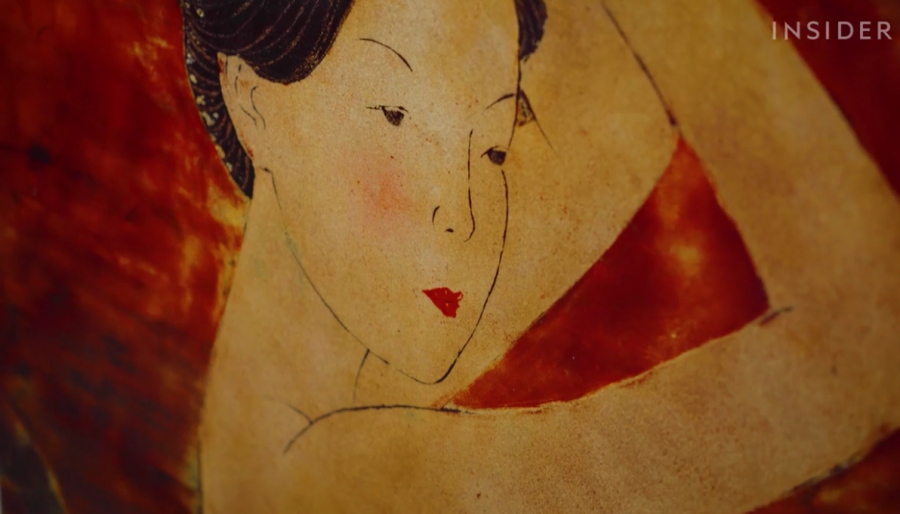
The elaborate and risky process helps to increase the value of each created work.
The challenge of creating the artist's pleasure
Although artists cannot predict their final work with 100% accuracy, the excitement and feeling of uncertainty are the joy and motivation of artists passionate about this genre of painting.
"When a traditional lacquer painting is completed, almost nothing is visible underneath. During the process of drawing and polishing, details gradually appear, colors slowly reveal themselves, creating a feeling of excitement for the artist, waiting for the final destination. This is the feeling that many artists love."
Although lacquer art has appeared thousands of years ago in countries around the world such as Japan, China,... but since the beginning of the 20th century, Vietnamese artists have developed a passion for lacquer paintings and created a unique art style in the world. Let's explore this unique art form through Business Insider's report.





